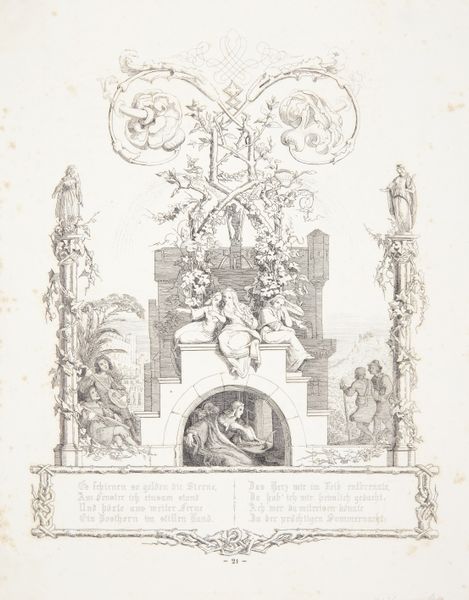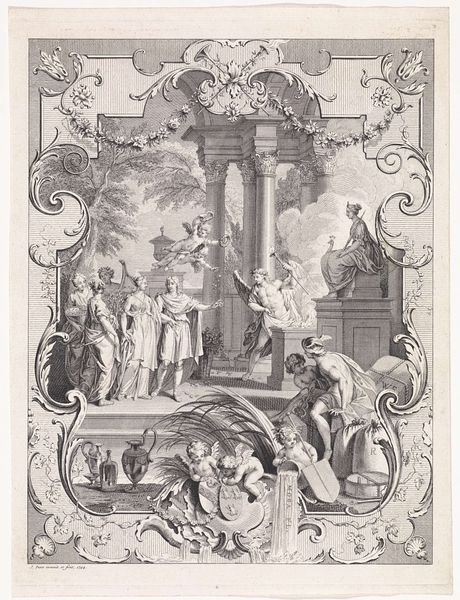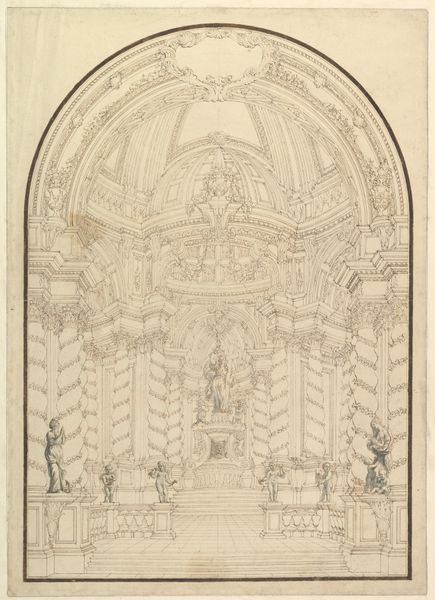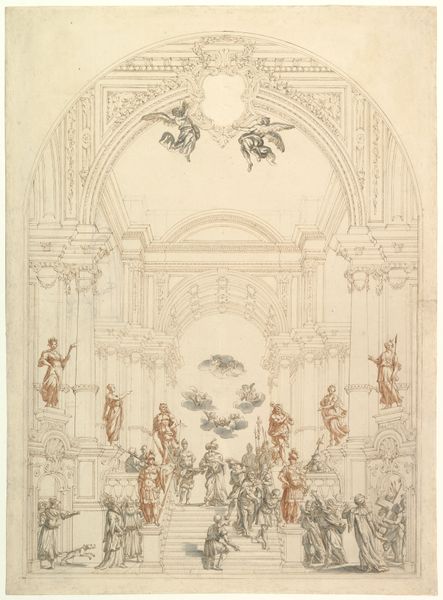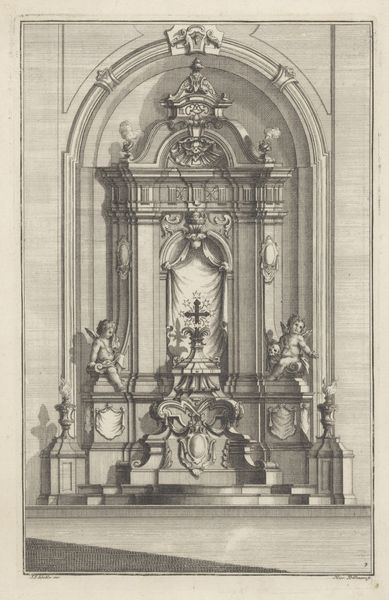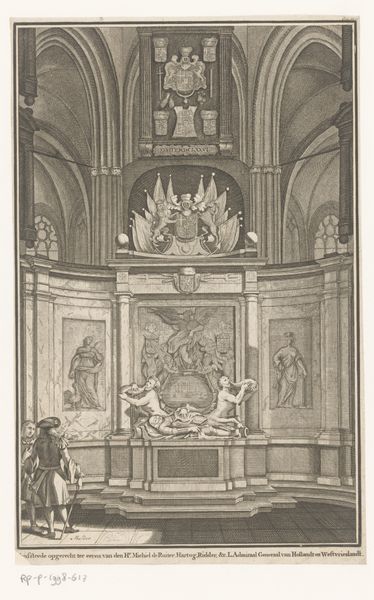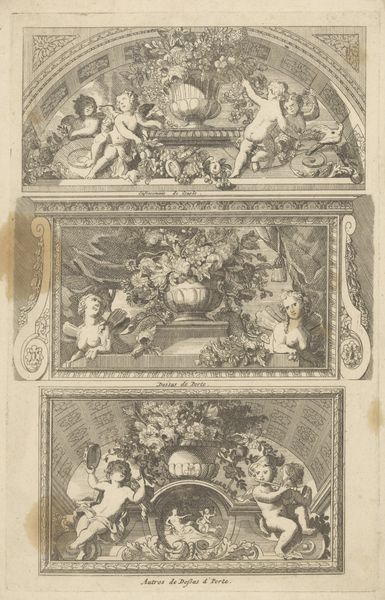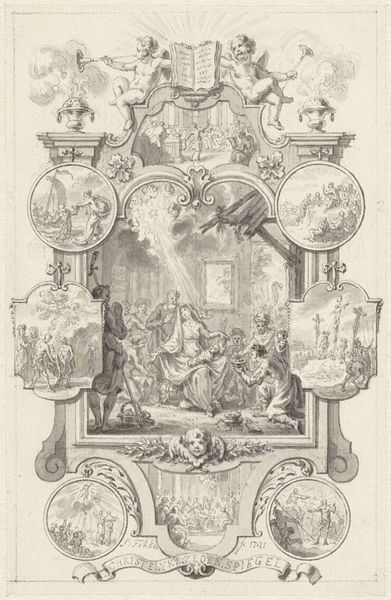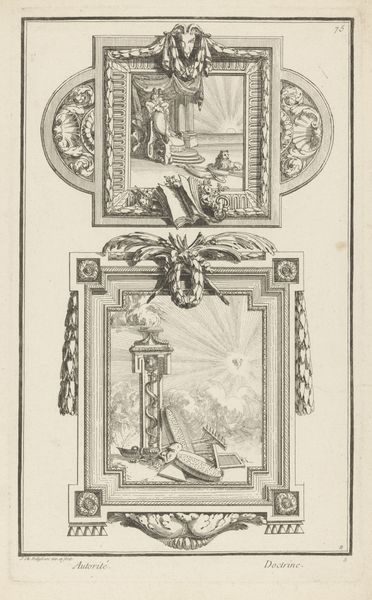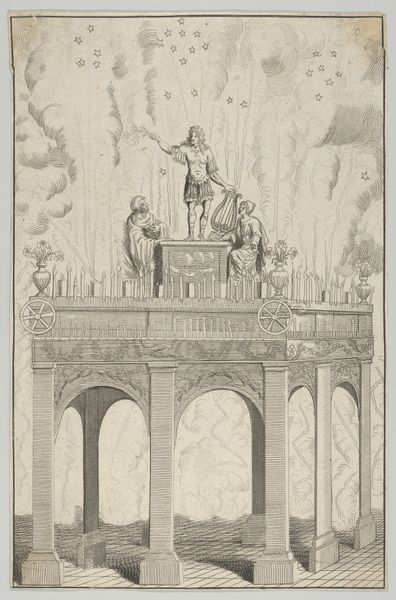
Ein Brautpaar mit Hymen an einem Altar stehend, Amor schwebt über ihnen mit reicher Architektur 1745
0:00
0:00
Copyright: Public Domain
Editor: This pen and ink drawing is called "Ein Brautpaar mit Hymen an einem Altar stehend, Amor schwebt über ihnen mit reicher Architektur" by Jan Punt, created in 1745. It feels very staged, like a theatrical production. How do you interpret this work? Curator: The allegorical marriage scene presents us with a complex set of social commentaries. Beyond the idealized romanticism of the era, I'm curious about the societal structures the artwork implicitly endorses. Can we consider the implications of arranged marriages or the limitations placed on women within the context of 18th-century Netherlands, and how such ceremonies reinforce patriarchal power dynamics? Editor: I hadn’t thought about that. So, the idyllic setting, the hovering Cupid, and the rich architecture…they all kind of mask a potentially less romantic reality? Curator: Exactly! Think about the artist’s choices in depicting these figures, how the scene stages particular performances of gender. Where are we, in this picture? Are we invited, or simply observing? Where do we position ourselves in the crowd of onlookers? Do the bride and groom look happy? Does the theatrical style of this scene remind you of other power dynamics present at the time? Editor: They do seem a little… stiff. The performance aspect makes me think about how marriages were often about consolidating wealth and social status, not just love. It's also interesting how the artist uses classical figures like Cupid in what is supposed to be a contemporary scene. Curator: Yes, by referencing classical ideals of love and beauty, the artist elevates the event but also highlights the cultural expectations surrounding marriage. Considering Punt’s social standing, it’s vital to contemplate how these images affirmed specific social and political agendas. How does understanding these intersections change your initial reading? Editor: It makes me see past the pretty surface and think about what marriage really meant for people then, especially for women. It’s like the artwork is a beautiful façade with complicated social structures underneath. Curator: Precisely! Seeing beyond the surface enables us to critically engage with history and art's role in shaping our understanding of identity and power. Thanks, this piece really offers up many different levels to peel back! Editor: Thanks! Now I'm wondering what was left OUT of the image.
Comments
No comments
Be the first to comment and join the conversation on the ultimate creative platform.
